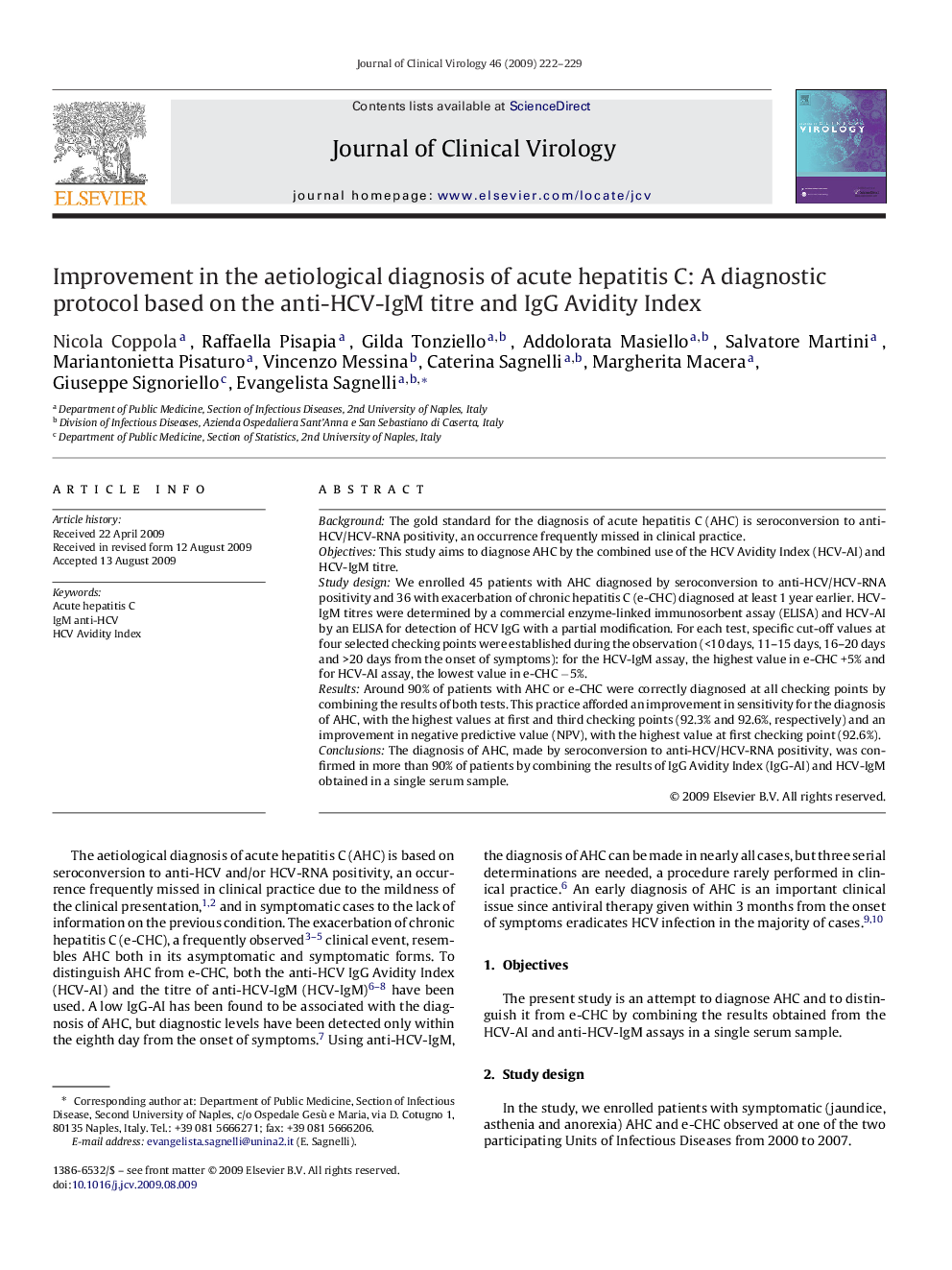| Article ID | Journal | Published Year | Pages | File Type |
|---|---|---|---|---|
| 3369565 | Journal of Clinical Virology | 2009 | 8 Pages |
BackgroundThe gold standard for the diagnosis of acute hepatitis C (AHC) is seroconversion to anti-HCV/HCV-RNA positivity, an occurrence frequently missed in clinical practice.ObjectivesThis study aims to diagnose AHC by the combined use of the HCV Avidity Index (HCV-AI) and HCV-IgM titre.Study designWe enrolled 45 patients with AHC diagnosed by seroconversion to anti-HCV/HCV-RNA positivity and 36 with exacerbation of chronic hepatitis C (e-CHC) diagnosed at least 1 year earlier. HCV-IgM titres were determined by a commercial enzyme-linked immunosorbent assay (ELISA) and HCV-AI by an ELISA for detection of HCV IgG with a partial modification. For each test, specific cut-off values at four selected checking points were established during the observation (<10 days, 11–15 days, 16–20 days and >20 days from the onset of symptoms): for the HCV-IgM assay, the highest value in e-CHC +5% and for HCV-AI assay, the lowest value in e-CHC −5%.ResultsAround 90% of patients with AHC or e-CHC were correctly diagnosed at all checking points by combining the results of both tests. This practice afforded an improvement in sensitivity for the diagnosis of AHC, with the highest values at first and third checking points (92.3% and 92.6%, respectively) and an improvement in negative predictive value (NPV), with the highest value at first checking point (92.6%).ConclusionsThe diagnosis of AHC, made by seroconversion to anti-HCV/HCV-RNA positivity, was confirmed in more than 90% of patients by combining the results of IgG Avidity Index (IgG-AI) and HCV-IgM obtained in a single serum sample.
